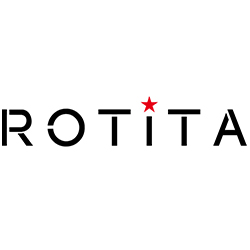The Bay Area may be seeing the first signs that the delta surge is finally waning after upending what was supposed to be a summer of relative pandemic freedom.
But public health experts warn that this fourth wave is unlike any other the region has seen so far, and it’s too soon to say how fast it will ebb or whether the current downward trends will hold, with children back in school and holidays and other events on the horizon that could drive up cases once again. This winter could see another uptick, and vaccination rates may not reach high enough levels to substantially curb the pandemic until early next year, experts say.
For the moment, there are glimmers of hope. Hospitalizations for COVID-19 in the Bay Area dropped for six consecutive days over the end of last month and early this month, and are down about 15% from what may have been the peak, Aug. 24. That’s promising news after weeks of dramatic increases.
It’s a bit more challenging to identify trends in case counts, at least for the region as a whole, in part due to inconsistent data reporting. Coronavirus cases are down in all counties from two weeks ago, though they’ve inched up in a few places recently. The Bay Area reported on average 16 cases a day per 100,000 residents over the seven days ending Tuesday, compared with about 24 cases per 100,000 two weeks ago.
“We have just now started coming down from our peak of delta,” said Dr. Susan Philip, the San Francisco health officer, in an interview Wednesday. “It was a significant surge.”
But some experts wondered how long the downward trend would last. “All the indicators are going in the right direction,” said Dr. George Rutherford, an infectious disease expert at UCSF. “But cases are jumping around, which makes me think we’re going to rebound. I’d say right now it’s hard to call.”
COVID deaths, which typically lag a few weeks behind cases and hospitalizations, are beginning to climb across the region, though not as fast or as high as might have been expected in earlier surges. Health experts say that’s almost certainly due to the region’s relatively high vaccination rates.
Roughly 10 people are dying each day in the Bay Area now, a substantial climb from mid-July when there were just one or two deaths a day.
But the current figures show a smaller fraction of total cases and hospitalizations than have been reported in earlier surges.
Last year around Labor Day, the region was reporting about 15 deaths and about 700 cases per day, with approximately 500 people hospitalized with COVID. This year, it’s 10 deaths and well over 1,000 cases per day, and more than 900 hospitalized.
“We’ll keep monitoring this. But so far our deaths really have been blunted, I think, from the very high vaccination rates,” Dr. Sara Cody, the Santa Clara County health officer, said at a Board of Supervisors meeting last week.
The encouraging news in the Bay Area echoes similar reports for California as a whole, even as pockets of the state continue to be mired in the delta surge. Rural Northern California and the Central Valley — two regions with lower overall vaccination rates than other parts of the state — have been hit particularly hard, and hospitals have struggled to keep up.
Last week, the state announced that the San Joaquin Valley — which includes 12 Central Valley counties — was being placed under a “surge order” because intensive care beds were becoming scarce, with some counties reporting no available capacity. The order requires hospitals around the state to accept transfer patients from strained hospitals when none in the region have space.
As of Tuesday, ICU availability in the region had dropped to 6.8% — under 10% triggers the state surge order. ICU availability was 24% for the Greater Bay Area and 20% overall for the state.
In other parts of the country, the picture is even more dire. Intensive care units in some Southern regions are filled entirely with COVID patients and have no available beds. In at least six states — Alabama, Arkansas, Florida, Georgia, Mississippi and Texas — more than 90% of all ICU beds are occupied, according to the Center for Infectious Disease Research and Policy at the University of Minnesota.
“Every health care system in the country is stressed because of COVID. It was true at the beginning; it was even more true now that we’re a year and a half into the pandemic. The question is what’s the relative level of stress,” said Dr. Susan Ehrlich, chief executive of San Francisco General Hospital, during a panel discussion last week.
“The big picture of San Francisco is … people were willing to stay home and willing to wear masks that mitigated the full impact of the pandemic,” she said. “What it means now is at San Francisco General today we have 25 people with COVID in the hospital. But if you were in Florida or Mississippi or Texas, hospitals are completely overwhelmed.”
On Thursday, President Biden is scheduled to announce a new “six-point” plan to tackle the national delta surge that has been battering the country since early July and shows few signs of dissipating. The Centers for Disease Control and Prevention released new forecasts Wednesday that predict hospitalizations to hold steady nationwide over the next four weeks, and rise in 10 states.
Though trends are more favorable in the Bay Area, many experts acknowledge that the highly contagious delta variant — along with other factors such as students returning to in-person education and less inclination by officials to rely on mitigation efforts like community lockdowns — makes it harder to predict what the near future holds.
Relatively high vaccination rates surely are helping the Bay Area weather this surge better than many other parts of the country, experts say. But they’re not yet high enough to stop delta and end the pandemic.
“There’s this recognition that we’re going to be living with this variant for a good while,” said Dr. John Swartzberg, an infectious disease expert at UC Berkeley.
“We got used to the roller coaster — it goes up, and then it goes down. But we’re not seeing it go down as fast this time. It may be things aren’t going to look good until quarter one” of 2022, he said. “On the other hand, you can compare to where we were a year ago — kids are back in schools. Football games are being played. The number of people dying is much lower than a year ago. The world was much more terrifying than it is today. The longer view looks encouraging.”
San Francisco Chronicle staff writers Mike Massa and Aidin Vaziri contributed to this report.
Erin Allday is a San Francisco Chronicle staff writer. Email: eallday@sfchronicle.com Twitter: @erinallday


